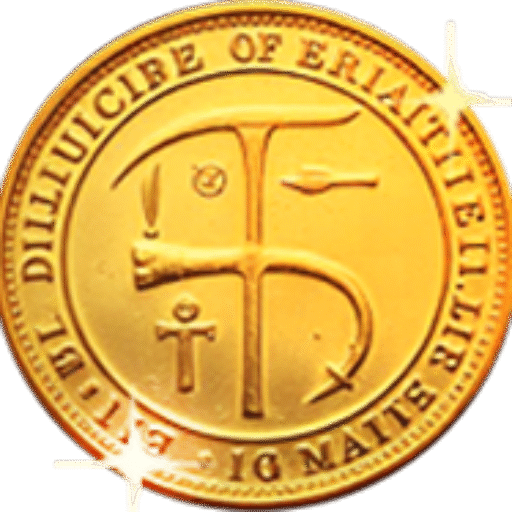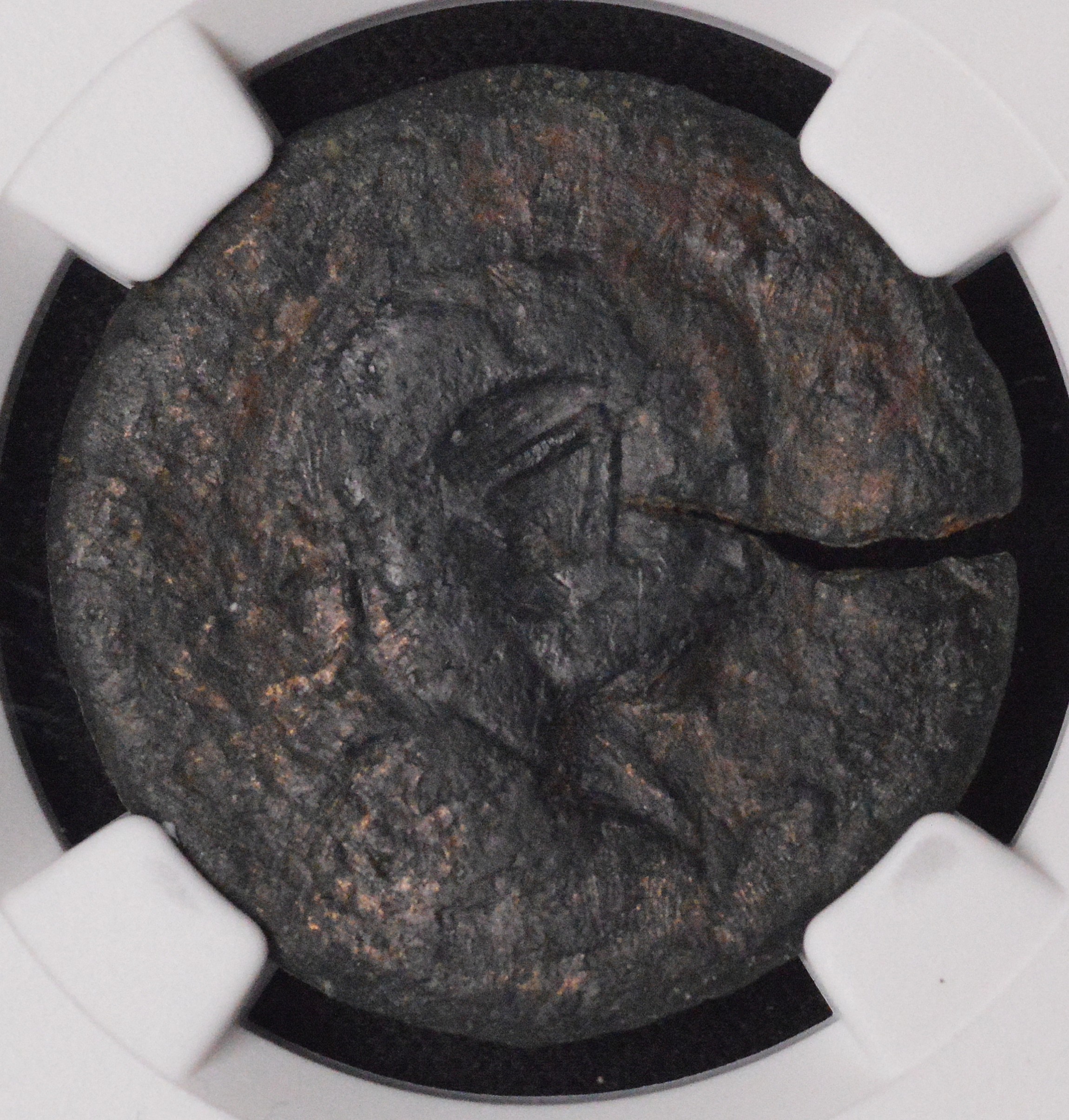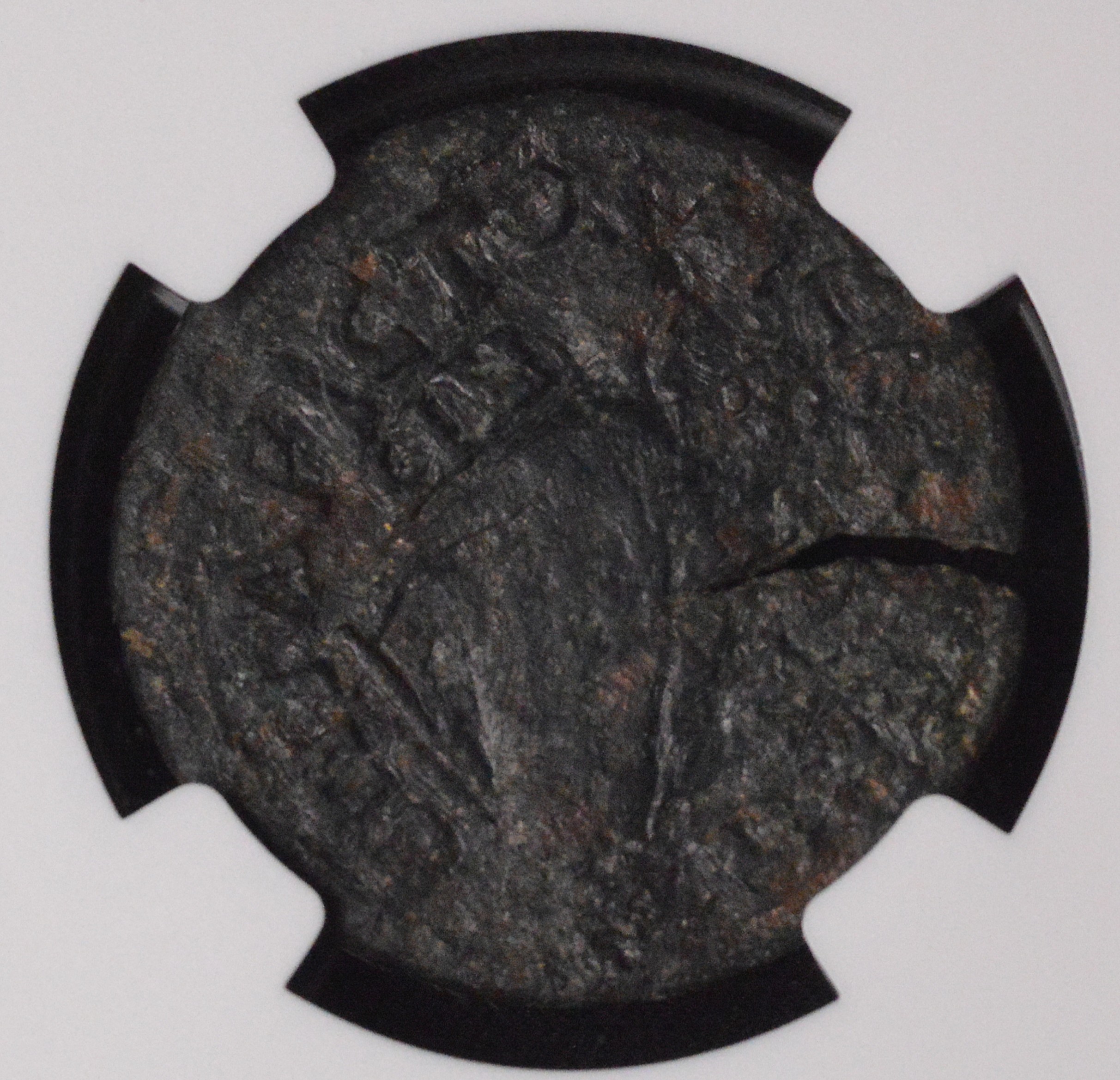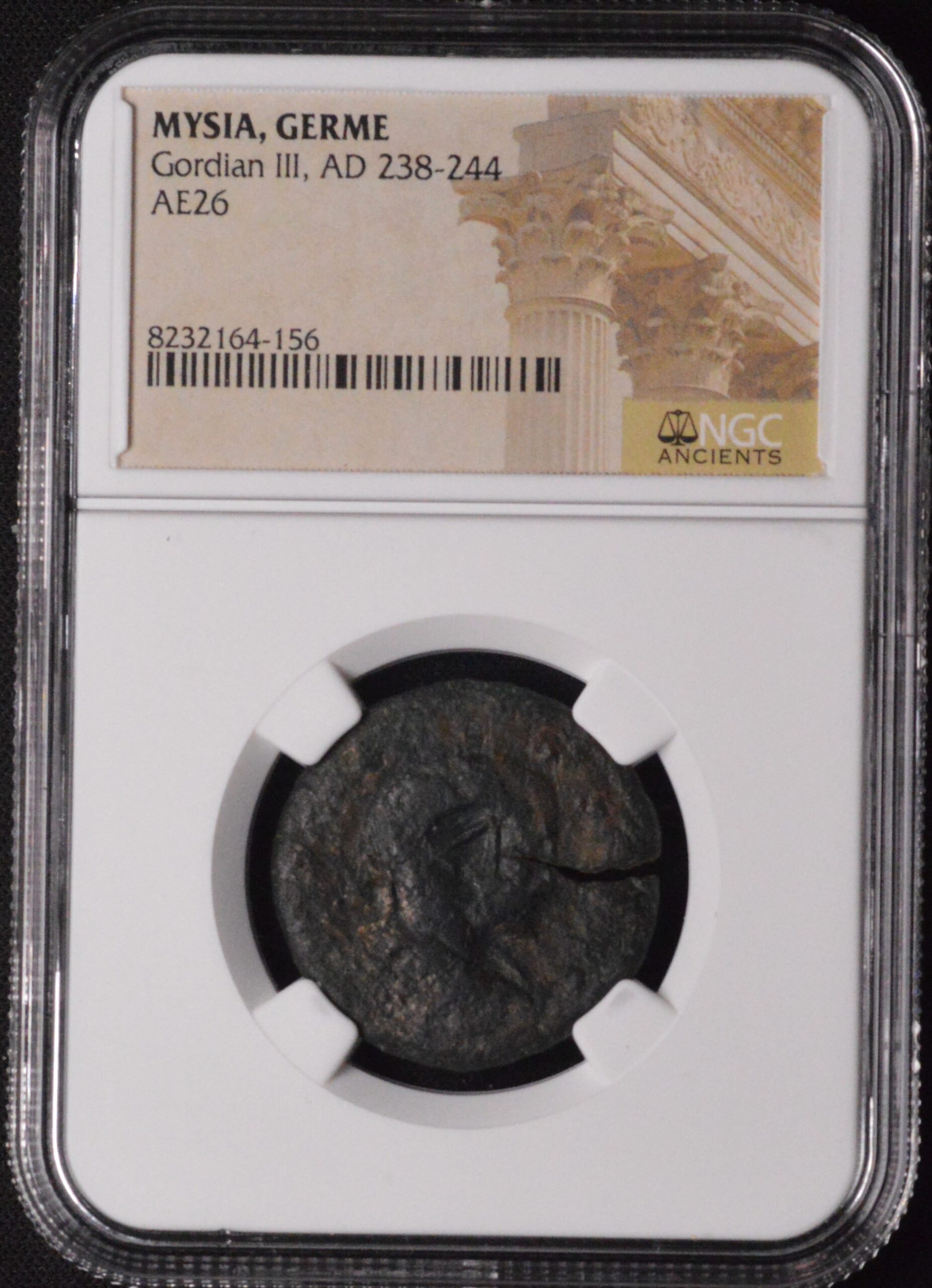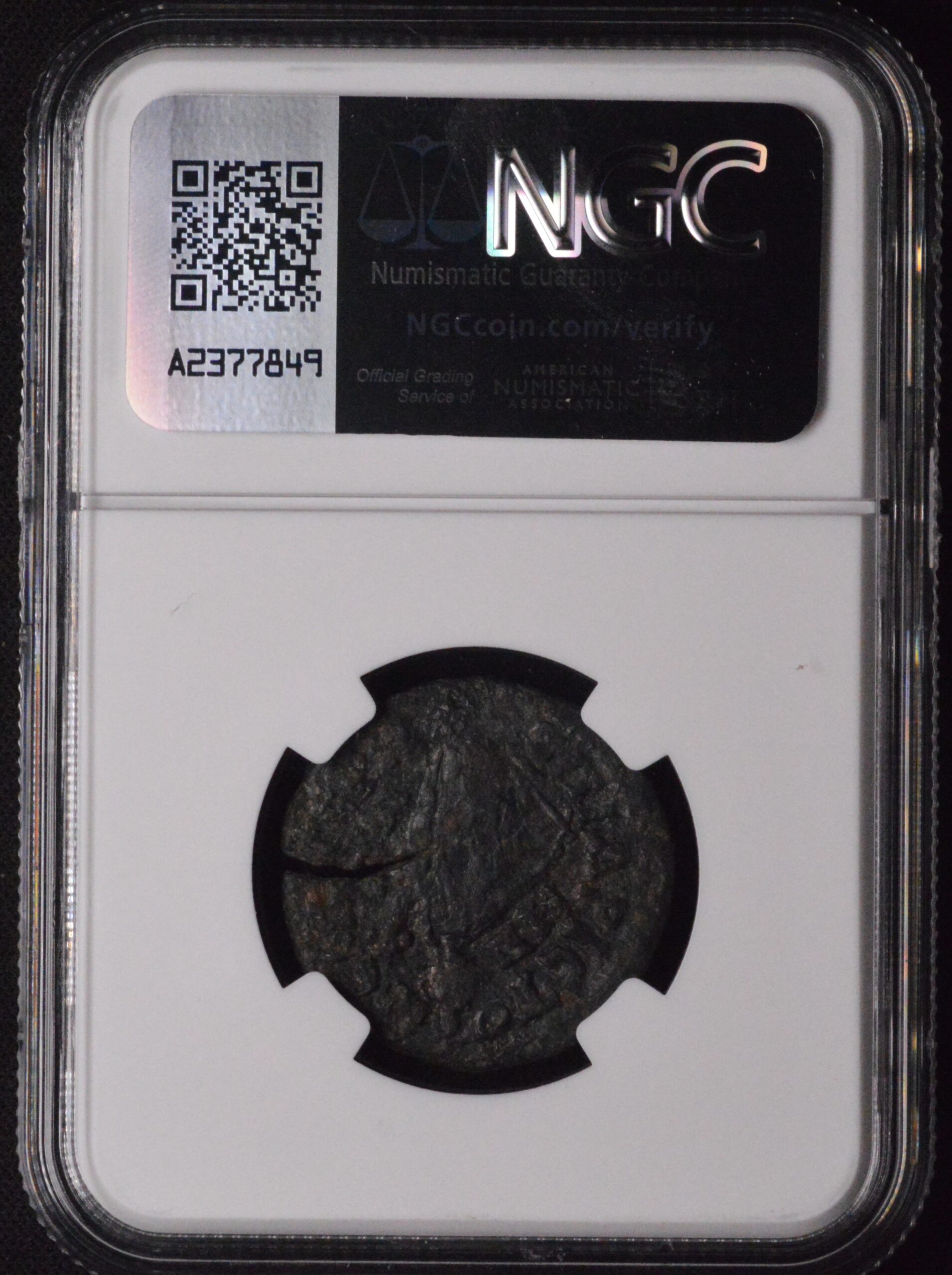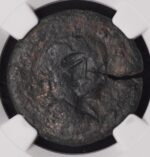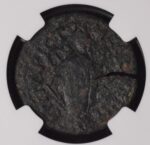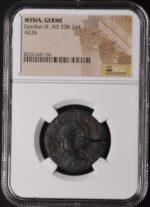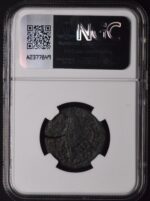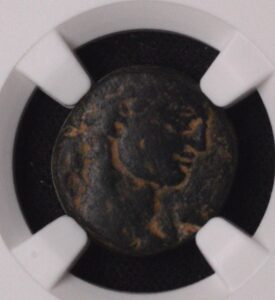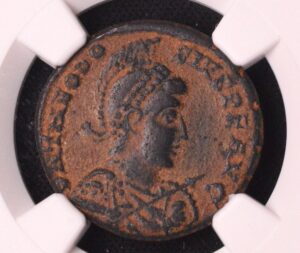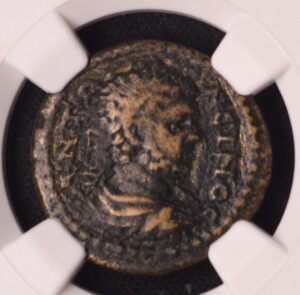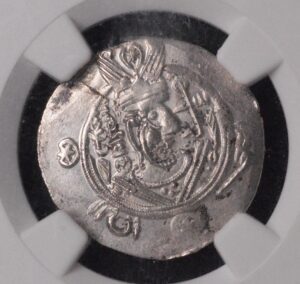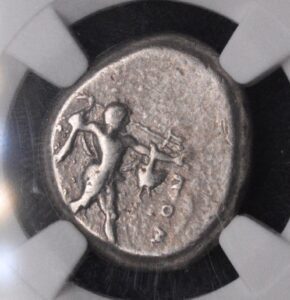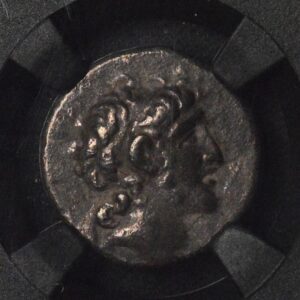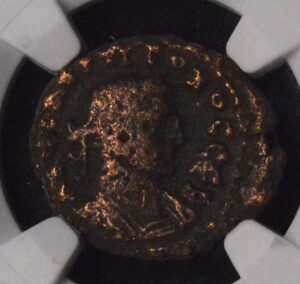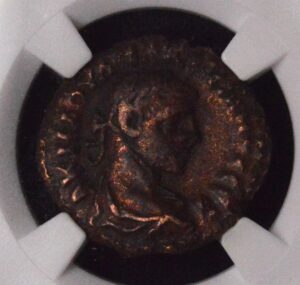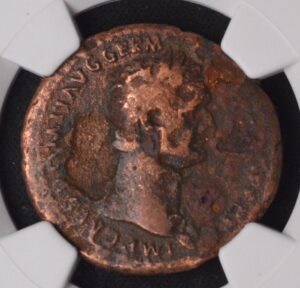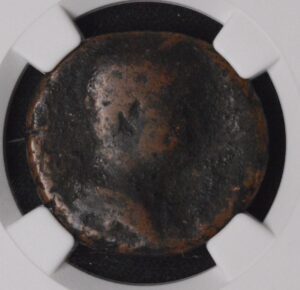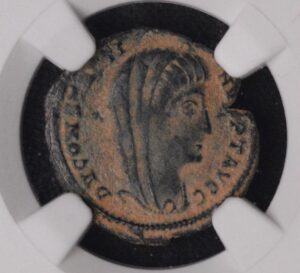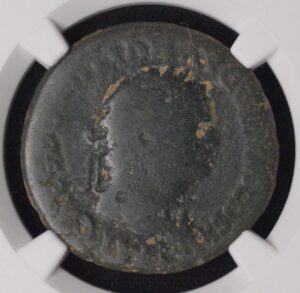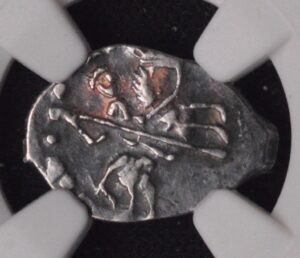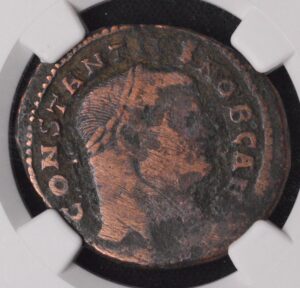Description
The coin described—MYSIA, Germe. Gordian III, AD 238-244, Æ26, countermarked and NGC certified—is a copper or bronze provincial coin struck in the ancient town of Germe (Germa) in the region of Mysia, located in the northwest of Asia Minor (modern Turkey). Gordian III was a young emperor who ruled the Roman Empire during a tumultuous period and is well-represented in the provincial coinage of Asia Minor.
Germe was situated between the rivers Macestus and Rhyndacus, in a region known for its strategic and economic importance. The town became part of the Roman Province of Asia after centuries of Greek, Persian, and Hellenistic rule. Coins from Mysia, including those from Germe, often show distinctive regional iconography and sometimes bear countermarks—official stamps added to extend a coin’s legal use or denote local authorization.
An Æ26 coin like this one measures approximately 26 mm in diameter and would typically feature a portrait of Gordian III on the obverse with Greek inscriptions, with local deities, personifications, or city symbols on the reverse. The NGC (Numismatic Guaranty Company) certification guarantees the authenticity and grade of the piece, which gives collectors added confidence. Countermarks further enhance its historical interest, documenting elements of the coin’s circulation and usage.
Coins such as this provide insight into the regional history, economy, and culture of Roman Asia Minor. They highlight the interconnected nature of the Roman provinces, local civic pride, and the personalization of coinage during the imperial era.
The coin described—MYSIA, Germe. Gordian III, AD 238-244, Æ26, countermarked and NGC certified—is a copper or bronze provincial coin struck in the ancient town of Germe (Germa) in the region of Mysia, located in the northwest of Asia Minor (modern Turkey). Gordian III was a young emperor who ruled the Roman Empire during a tumultuous period and is well-represented in the provincial coinage of Asia Minor.
Germe was situated between the rivers Macestus and Rhyndacus, in a region known for its strategic and economic importance. The town became part of the Roman Province of Asia after centuries of Greek, Persian, and Hellenistic rule. Coins from Mysia, including those from Germe, often show distinctive regional iconography and sometimes bear countermarks—official stamps added to extend a coin’s legal use or denote local authorization.
An Æ26 coin like this one measures approximately 26 mm in diameter and would typically feature a portrait of Gordian III on the obverse with Greek inscriptions, with local deities, personifications, or city symbols on the reverse. The NGC (Numismatic Guaranty Company) certification guarantees the authenticity and grade of the piece, which gives collectors added confidence. Countermarks further enhance its historical interest, documenting elements of the coin’s circulation and usage.
Coins such as this provide insight into the regional history, economy, and culture of Roman Asia Minor. They highlight the interconnected nature of the Roman provinces, local civic pride, and the personalization of coinage during the imperial era.
The coin described—MYSIA, Germe. Gordian III, AD 238-244, Æ26, countermarked and NGC certified—is a copper or bronze provincial coin struck in the ancient town of Germe (Germa) in the region of Mysia, located in the northwest of Asia Minor (modern Turkey). Gordian III was a young emperor who ruled the Roman Empire during a tumultuous period and is well-represented in the provincial coinage of Asia Minor.
Germe was situated between the rivers Macestus and Rhyndacus, in a region known for its strategic and economic importance. The town became part of the Roman Province of Asia after centuries of Greek, Persian, and Hellenistic rule. Coins from Mysia, including those from Germe, often show distinctive regional iconography and sometimes bear countermarks—official stamps added to extend a coin’s legal use or denote local authorization.
An Æ26 coin like this one measures approximately 26 mm in diameter and would typically feature a portrait of Gordian III on the obverse with Greek inscriptions, with local deities, personifications, or city symbols on the reverse. The NGC (Numismatic Guaranty Company) certification guarantees the authenticity and grade of the piece, which gives collectors added confidence. Countermarks further enhance its historical interest, documenting elements of the coin’s circulation and usage.
Coins such as this provide insight into the regional history, economy, and culture of Roman Asia Minor. They highlight the interconnected nature of the Roman provinces, local civic pride, and the personalization of coinage during the imperial era.
CUSTOMER FEEDBACK








Related Products & Newly Released!
-
$400.00




SHIPPING POLICY
Your order is shipped from the United States with USPS tracking within one business day.
14 Day Return Policy
You can return your item back within
14 days of the purchase

Secure payments
Your payments are 100% secure and are processed through Square or PayPal on a protected security network.
SHIPPING POLICY
FREE International and Domestic (United States) shipping. Your order is shipped with USPS tracking 24 hours after you order.
14 Day Return Policy
You can return your item back within
14 days of the purchase

Secure payments
Your payments are 100% secure and are processed through Square or PayPal on a protected security network.
RESOURCES
support
Get Fresh Articles!
Sign up now to receive our articles for the latest insights and promotions!
RESOURCES
support
Get Fresh Articles!
Signup our newsletter to get update insight or promotions.

